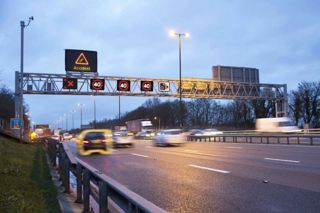National Highways wants to cut prolonged disruption from roadworks with a new plan to fast track upgrades of England’s busiest roads.
Two years ago, National Highways increased the speed limit past many major roadwork schemes, where safe from 50mph to 60mph.
It did this in response to feedback from road users voicing their frustration over the time spent travelling through work sites.
Evidence from trial schemes showed that this 'highest safe speed' approach cut journey times. Drivers were also more likely to comply with the new limits.
National Highways says it will close roads completely if it means it can carry out work quicker and cut overall disruption.
In some cases, this means building more structures offsite and then lifting them onto the network.
National Highways believes this can save months, even years of inconvenience that partial closures can cause.
Furthermore, it says it will: save taxpayer money; reduce the impact on local communities and drivers; lead to lower carbon emissions from construction equipment; and will reduce the risks to workers' safety.
National Highways says it will consult local communities before any full closures and will consider appropriate diversion routes and the impact on homes, businesses, hospitals and nearby events before making decisions.
Using full road closures to complete major road schemes supports the vision set out by 'Project Speed'.
This is the Government initiative, announced in summer 2020, to speed up work on infrastructure projects and stimulate the economy in the wake of the Covid-19 pandemic.
For example, National Highways is building a new bridge over the M42 as part of the HS2 rail scheme.
By installing the new bridge through two-week long closures (over Christmas 2021 and 2022 when traffic is lightest), it can avoid the 18 months of disruption conventional methods would bring.
When it does close roads for maintenance work, it says it can get the maximum benefit out of road closures and tackle as many jobs as it can on the same stretch of road - at the same time.
For example, combining maintenance works between M53 junctions resulted in 5,000 less hours that our workforce had to be exposed to moving traffic and 10 fewer times that it had to cone lanes or use traffic management.
Increasing full closures is part of a package of measures designed to cut the disruption of roadworks.
It is also considering: expanding the 'highest safe speed' approach to roadworks; improved diversion signs and information for road users; improved roadside communication to drivers; decluttering work sites and roadsides; and more ways for drivers to report problems on its roads.
Details are set out in the National Highways updated Delivery Plan for 2022/23, published alongside its annual report and accounts.























Login to comment
Comments
No comments have been made yet.